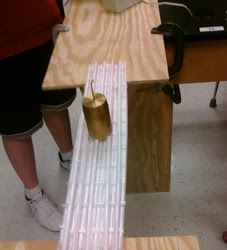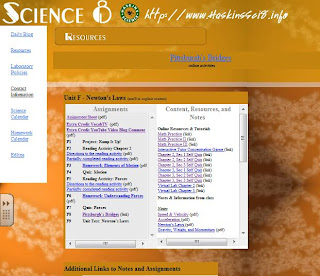Due to the PSSA tests, there were no science classes today. But I thought I'd write just a little about the events occurring in Japan.
Last Friday's earthquake and tsunami will no doubt be one of the largest natural disasters of this century. Many people who are aware of the news no doubt have their thoughts with those affected. The facts about recovery efforts in the region are currently overshadowed by the problems at the Fukushima Dai-ichi nuclear power plant in northern Japan. We spent some time in class last grading period talking about nuclear reactions and the by-products of such reactions. Radiation is very difficult to explain and comprehend. We can't sense its presence, yet it is around us nearly all the time. Usually, natural radiation occurs in very limited amounts and poses no threat to our lives. We often learn about it in context of the elements that usually degrade and give off gamma rays as well as alpha and beta particles. In class we looked at the elements radon, radium, uranium, and plutonium as a source of radioactive particles.
So the question that many are asking, "Is nuclear energy worth it?" When I taught a course called college ecology, this was the focus of our discussion on government energy policy. Weighing risks and benefits is very important in environmental ethics. As seen at Fukushima, there are radioactive risks with nuclear technology. The process of generating electricity with nuclear fuels requires specific equipment and technology to minimize exposure to radiation and radioactive substances. When technology is pushed beyond its functional limit, especially in rare and unexpected events like in Japan, it can fail and the results could be devastating. Time will only tell what short-term and and long-term problems will result from the failure of the Fukushima power plant.
In answering the question about the worth of nuclear power, we must also look out our consumption of energy. Nuclear fuels are just one part of our vital energy infrastructure. Our need for more electrical power to meet consumer demand will strain the current system. The other sources of electrical power, which include coal, oil, natural gas, hydroelectric, wind, and solar, have limitations in scale and operation. Fossil fuels produce toxic substances and release carbon dioxide into the atmosphere. Coal-fired power plants are notorious polluters by releasing nitrous oxide and sulfur dioxide, which are a major contributor to Western Pennsylvania's poor air quality. Solar, wind, and hydroelectric are too limited to be practical in most places in the United States.
There will no doubt be a place for nuclear energy in our future. But, there must be a consistent push for safety and regular upgrades with new technologies. Understanding how we move forward with our energy policies must take into account the risks and the benefits. We must avoid a rush to judgment about the Fukushima power plant failures before a thorough review is conducted. Our immediate concern should be for those affected by the disaster and hope they soon find relief.





























